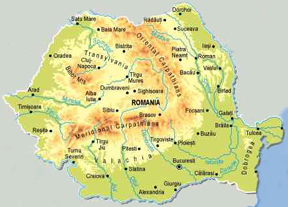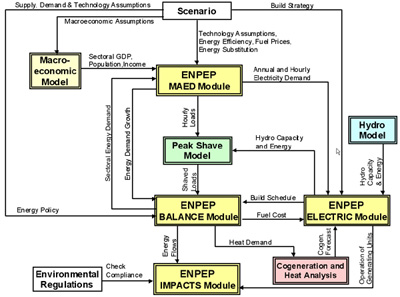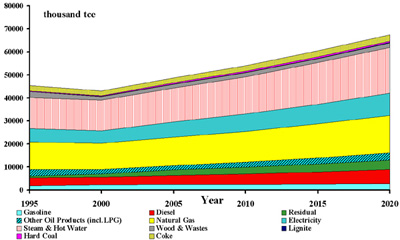| Center for Energy, Environmental, and Economic Systems Analysis (CEEESA) |  |
Research Areas:
Energy, Environment, and
Economics
National and Homeland
Security
Infrastructure Assurance
Emergency Preparedness
Social Dynamics
Policy Analysis
Core Capabilities:
Systems Analysis
Modeling, Simulation, and
Visualization
Complex Adaptive Systems
Decision Support and Risk
Management
Information Sciences
Assisting The World Bank and the Government of Romania in Developing a National Fuel Policy
Methodology: The Center for Energy, Environmental, and Economic Systems Analysis (CEEESA) was invited to assist the Government of Romania in developing a long-term energy policy. The World Bank agreed to be the administrator and supervisor of the studies to be carried out during the project. CEEESA staff members developed an integrated modeling framework specifically tailored to analyze the energy sector in Romania. The integrated modeling framework was configured such that the pros and cons of alternative economic and energy strategies can be measured in terms of their ability to achieve the overall goals and objectives of the country, while satisfying the pollution control requirements. More specifically, the configuration helped analysts identify those policies that would promote development of a system that aligns the future economic structure of the country with its energy resources. The modeling system achieved this goal by simulating market forces via price signals, such that energy supply resources and demands are in equilibrium. The primary computer tool used in the analysis was CEEESA's ENergy and Power Evaluation Program (ENPEP-BALANCE). In addition, models such as the Model for the Analysis of Energy Demand (MAED) and the Wien Automatic System Planning Package (WASP), as well as other modeling tools developed by Argonne and Romanian energy experts, were used. Integrated Modeling Framework: Scope of Work: The links among energy supply and demand, energy prices, and economic activity in Romania are very complex and involve a high degree of uncertainty. For this reason, the long-term energy supply options and the evolution of energy balance up to 2020 were analyzed. The analysis used several scenarios in order to take into account different assumptions regarding the possible future development of the energy sector and the overall Romanian economy. The key assumptions used to create the scenarios were related to the macroeconomic projections, diversification of imported energy sources, rehabilitation and modernization of the energy sector, restructuring of the industrial sector, development of nonutility and independent power producers (IPPs), removal of subsidies, projections of fuel prices, and fuel switching and substitution. A reference case and seven alternative scenarios were analyzed in detail. Results of Analysis: The study provided a number of recommendations for a sustainable energy policy in Romania, including the liberalization of the domestic energy market, improved technology efficiency, energy conservation, increased utilization of renewable energy resources, strict pollution controls, improved energy management, diversification of energy supply sources, establishment of adequate domestic fuel stocks, increased research and development, and implementation of advanced energy technologies. The analysis performed by Argonne and Romanian experts served as a basis for the long-term energy strategy adopted by the Government of Romania. Projected Final Energy Demand by Energy Form
Additional Resources: For more information on this application and the ENPEP-BALANCE model, download the following brochures, presentations, and papers in pdf format:
For more information, contact CEEESA |
| U.S. Department of Energy Office of Science | UChicago Argonne LLC |
| Privacy & Security Notice | Contact Us | Search |
 Background: Faced with a rapid decline in domestic oil and natural gas production, the Government of Romania has decided to develop a long-term energy strategy aimed at the efficient use of energy resources. The primary goals were to develop and adopt an appropriate fuel policy for the country that would (1) facilitate decision making for promoting the efficient use of energy resources and (2) formulate least-cost development plans for the energy sector. Additional goals for the new energy strategy included assessing Romania’s comparative advantages with regard to the availability and use of energy resources (both domestic and imported) and of environmental impacts associated with different fuel policy options.
Background: Faced with a rapid decline in domestic oil and natural gas production, the Government of Romania has decided to develop a long-term energy strategy aimed at the efficient use of energy resources. The primary goals were to develop and adopt an appropriate fuel policy for the country that would (1) facilitate decision making for promoting the efficient use of energy resources and (2) formulate least-cost development plans for the energy sector. Additional goals for the new energy strategy included assessing Romania’s comparative advantages with regard to the availability and use of energy resources (both domestic and imported) and of environmental impacts associated with different fuel policy options.
